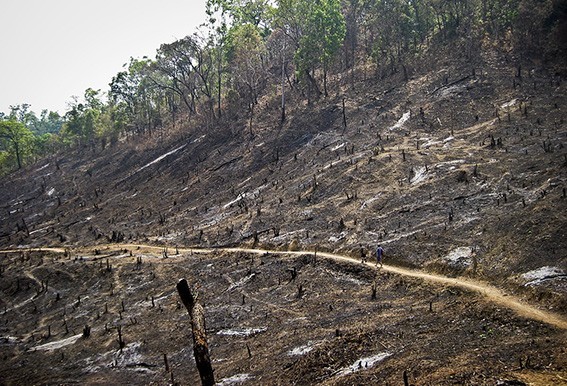This might seem like a strange question to some people. What do conservation and agriculture have to do with each other? But once you start exploring the topics their intersection becomes more clear.
The need for food is one we cannot escape – every human being on the planet needs to be fed to survive. All food starts with at least one plant crop in some form. This can be direct, like the vegetables you eat in a salad, or a multi-step process, like the soybeans that are processed into tofu or the grains and grass that feed beef cattle. In order to grow these crops we need land, and as the population of the world grows, and we become more wasteful with our food, we need ever increasing amounts.
Many crops are also grown for non-food products. Toiletries and cosmetics (as well as many other things) use palm oil, construction requires wood and certain plants are used for pharmaceuticals. The list goes on. This too all requires land.
Combined with the need for land for living space and all the other infrastructure related to human settlement you can see that human beings take up a lot of space. Unfortunately this means we need to clear and heavily modify the land to fill these needs. This constant need for more land often puts agricultural objectives in direct conflict with conservation objectives.
Conservation focus is normally on preventing development/use of natural areas and minimising human impact. When agricultural development means jobs, money and a better quality of life it is no surprise that it normally trumps conservation plans.
So, on the face of it agriculture and conservation are indeed enemies. However, it doesn’t have to be this way…
Sustainable agricultural practices that use less land, less resources (like water) and look after the health of the land can aid in conservation. If the correct practices are used then the soil in crop land can remain good and be used year after year, removing the need to clear new land regularly. This is a huge game-changer in many countries where slash and burn is still common.

Slash & burn agriculture is still common in many areas of the world. Photo via Wikimedia Commons.
Agricultural methods that mix different crops, allow spaces and pathways for wildlife, don’t use chemicals that damage the soil and local ecosystems and still provide good yields are ideal. Use of these systems is growing but still accounts for only a small fraction of agricultural land.
Good, sustainable agriculture = better, sustainable conservation practices. I cannot overstate the importance of this.
One of the fastest ways to move towards changing to these systems is to vote with your wallet. So, next time you’re buying a product, give some thought to where the materials come from, and choose something that is made with less destruction to the environment. Every little bit helps.
By Bryony Smart, PTK Botanist.
Image credits:
Slash & burn photograph by mattmangum (https://commons.wikimedia.org/w/index.php?curid=33978400) via Wikimedia Commons


